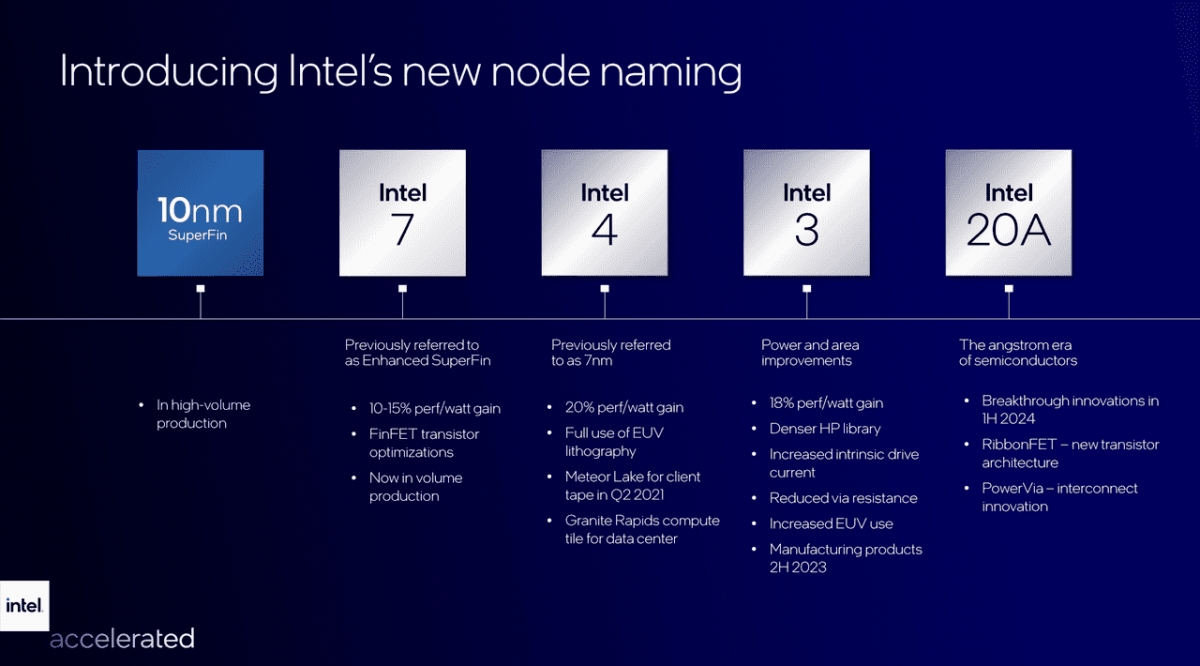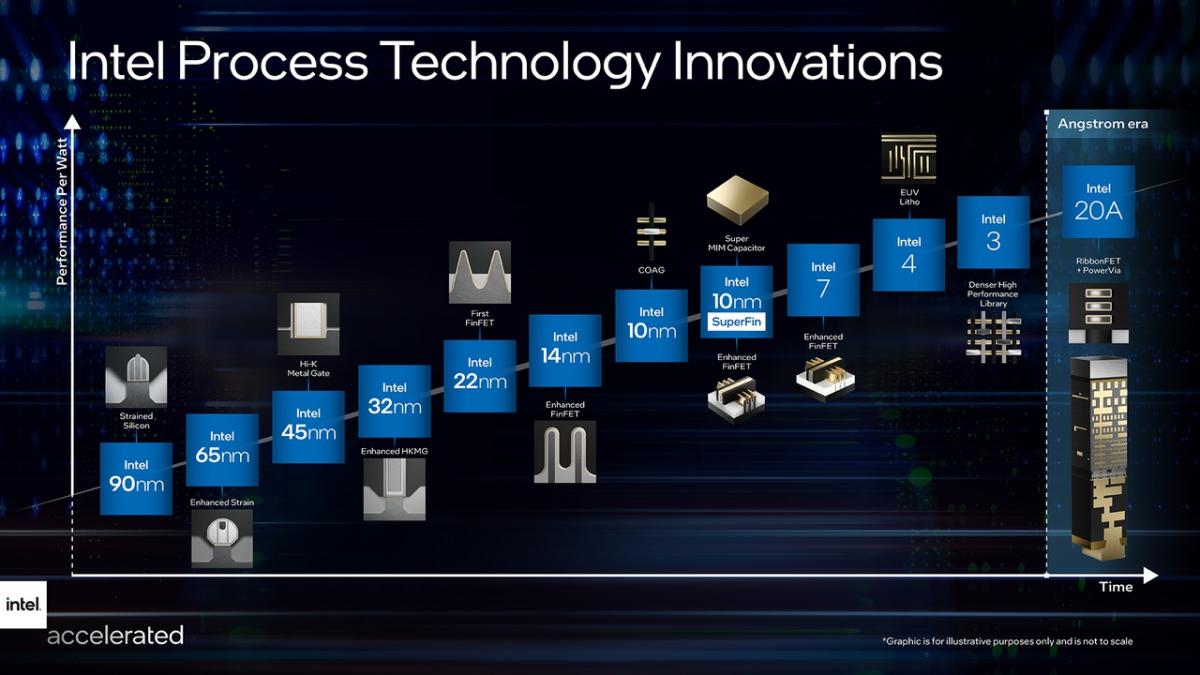Processes at Intel will no longer be measured in nanometers. To differentiate itself from rivals, the company is adopting new names that are intended to provide a "clearer picture." As a result, Intel's upcoming 10nm+ and 7nm nodes will be named Intel 7 and 4.
Intel 7 is the new name for 10nm Enhanced SuperFin, which Intel previously called SuperFin. Intel's 10nm SuperFin process, used in Tiger Lake processors, has been improved. A performance gain per watt of 10 to 15 percent over 10nm SuperFin has been achieved with Intel's 7-nanometer process, which is now in volume production.
Alder Lake CPUs for desktops and laptops will be available this year, made with Intel's 7-process technology.
Intel renames its upcoming 7nm process Intel 4 to avoid confusion with its predecessor, Intel 3. Intel will use euv in production for the first time. About 20 percent more performance per watt than Intel 7 is expected with this generation. Products should appear in 2023 if production begins in the second half of 2022. Granite Rapids for data centers and Meteor Lake processors for consumers. An 18 percent increase in performance per watt is expected with Intel 3, thanks to the addition of euv layers and FinFET optimizations. A new Intel node is planned for the second half of 2023.
| Intel | TSMC | Samsung | |||
| 10nm | 10nm | 7nm | 10nm (LPP) | 7nm | |
| Gate pitch | 54nm | 66nm | 57nm | 64nm | 54nm |
| metal pitch | 36nm | 44nm | 40nm | 44nm | 36nm |
| Fin pitch | 34nm | 36nm | 30nm | 42nm | 27nm |
Comparison of three reference pitches, the minimum distance between two parts, in processes from Intel, TSMC and Samsung.



